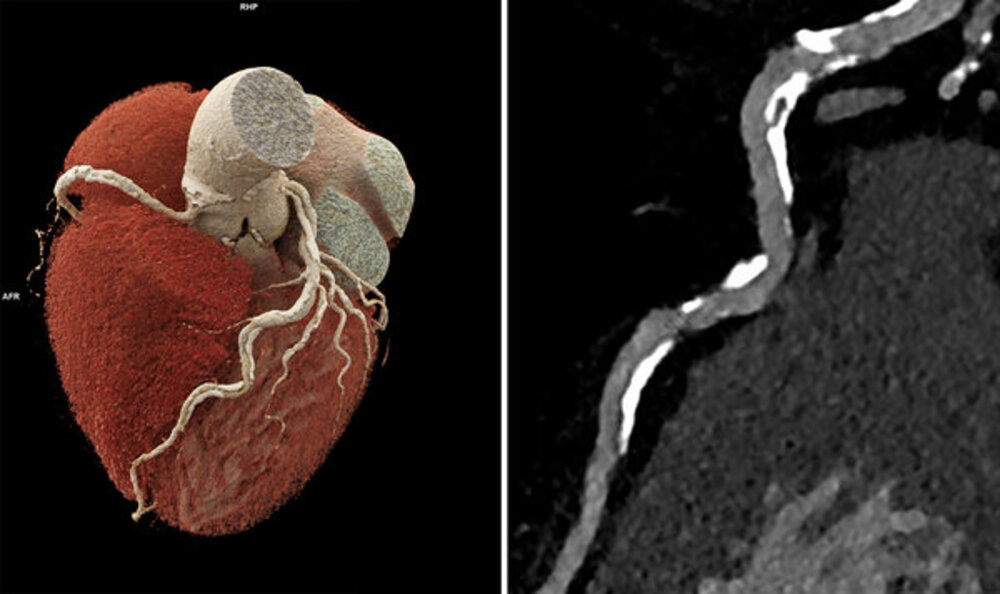- IMS Info Brochure (pdf)We Extend the Frontiers (pdf)Patient information (pdf)Second Opinion (pdf)Check ups (pdf)
Photon-counting computed tomography instead of cardiac catheterization?
[02.08.2023] High-risk patients can now be examined non-invasively for heart disease, thanks to ultra-high resolution, fully digital photon-counting computed tomography.
In a recent study, physicians and researchers at the Medical Center - University of Freiburg show that the new generation of computed tomography scanners, known as photon counting CTs, significantly improve the diagnosis and image quality of coronary heart disease in high-risk patients. This could be a major benefit for individuals who previously required urgent invasive cardiac catheterization.
"Our results show that with the new CT technology, significantly more patients will benefit from a non-invasive CT examination of the heart," says Prof. Dr. Fabian Bamberg, Medical Director of the Department of Radiology at the Medical Center - University of Freiburg. "This is excellent news for our patients and will further improve clinical care."
Precise Images as the Basis for Therapy
Dr. Hagar, lead author of the study and physician at the Department of Radiology at the Medical Center - University of Freiburg, explains, "In classic CT images, coronary artery calcifications often appear larger than they actually are. This effect is stronger the larger the calcification is." Until now, this could lead to an overestimation of constrictions and plaques and, as a result, to overtreatment. As a consequence, these patients used to be quickly referred for cardiac catheterization or examined in magnetic resonance imaging.

Photon counting CT of the heart of an 87-year-old patient. Despite very severe calcifications on the vessel walls (shown in the 3D image), a diagnostic image successfully shows that the vessels are not blocked. Catheter intervention is not necessary in this case.
©UKF
Photon counting CT is significantly more sensitive than conventional CT devices and actually requires less radiation for comparable images. This is why the method is initially particularly suitable for high-risk patients, who benefit especially from the high-resolution images.
Photon-counting CT devices like the one at the Medical Center - University of Freiburg are still relatively rare worldwide, but experts expect this technology to become increasingly widespread over the next ten years and to significantly change CT diagnostics.
The research team is now investigating the diagnostic potential of photon-counting CT technology in oncology.
More Interesting Articles